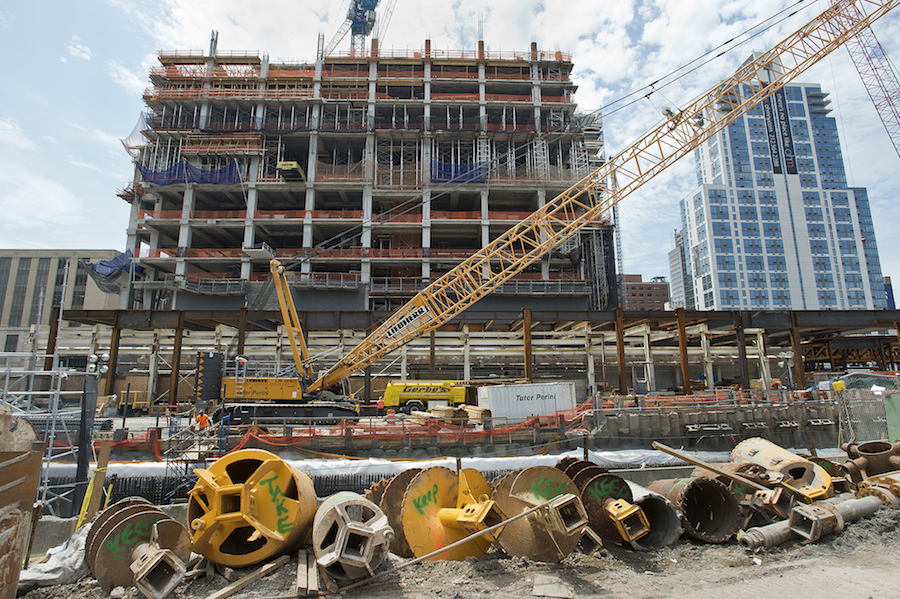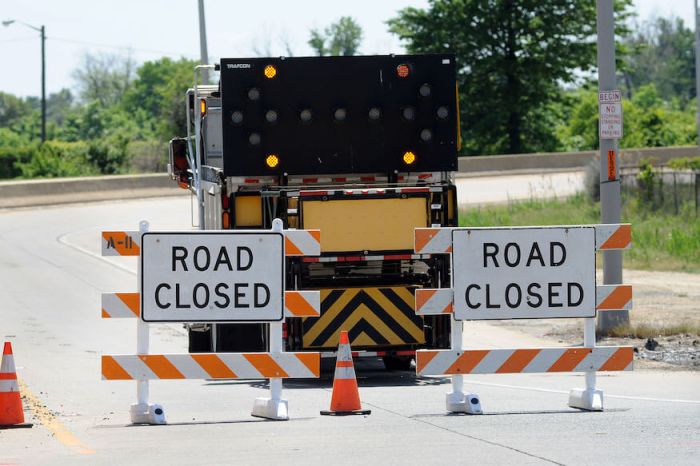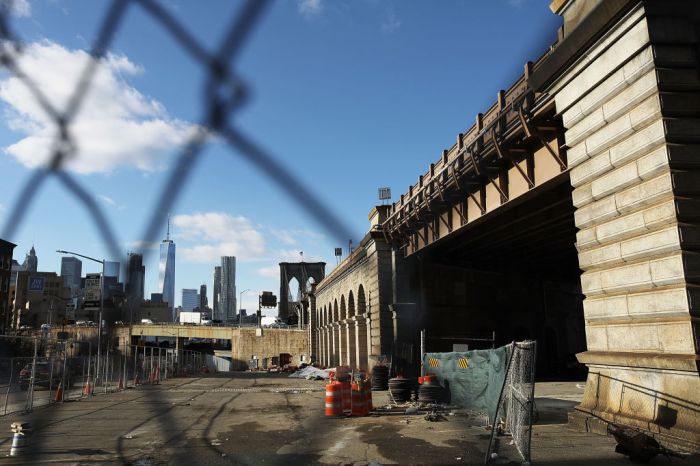New York City construction seems never ending, but after years of a development boom, there’s signs that building activity is slowing down across the five boroughs.
The NYC Department of Buildings issued a total of 165,988 construction permits in 2018, down from 168,243 in 2017, according to data released this week.
That’s still a lot of permits — the second highest total on record — but it’s the first decline in total permits issued year-over-year since 2009, showing that New York City construction could be leveling off.
“While construction activity remains strong, the building boom may have finally hit its peak,” said Buildings Commissioner Rick D. Chandler in a statement.
Those 2018 New York City construction projects will add 46 million square feet, or more than 1.5 square miles, of new floor space to the city. That’s on par with 2017, but a big drop from 2015, when approved proposed construction totaled 93 million square feet of new building space.
The largest portion of all that new space will be in Manhattan, which accounted for 72,004 total permits, around 43 percent of all construction permits issued citywide. Brooklyn is still seeing a lot of building activity, too, as home to the most new building permits issued in 2018 at 2,756 total, or 34 percent citywide.
Within Brooklyn, Williamsburg and Greenpoint had the most activity with 414 permits issued for new building construction, much of which is along the L-train corridor, according to the department.
Then there’s demolition permits, for which Flushing, Queens stood out. Flushing leads all community boards citywide in demolition projects (148 total) and major alteration projects (446 total).
These demolitions are “almost certainly indicators” of future redevelopment based on past trends, said Andrew Rudansky, DOB spokesperson. The highest levels of demolition activity are in Williamsburg, Bushwick, Borough Park, Midtown Manhattan, Long Island City and Flushing, but demolitions are still down citywide.

Construction continues on One Vanderbilt as seen on Jan. 17, 2019. Getty Images
“Space is definitely at a premium in New York City. Compared to other cities around the country we have less space and higher density,” he said in an email. “This has created an unique situation in New York City where demolitions are almost always followed by redevelopment at a quick turnaround, as developers tear down old buildings to make the necessary room for new developments.”
DOB issued 2,092 demolition permits citywide in 2018, down from 2,290 in 2017.
Why a decline in New York City construction?
Mirroring the citywide drop in New York City construction permits, there’s also been a decrease in the number of employed construction workers. According to U.S. Department of Labor estimations, the employed construction workforce in New York City has decreased from an all-time high of 46,000 last year to 45,500, marking the first estimated decrease in construction employment here since the 2008 financial crisis.
But why this drop at all, after years of a real estate boom that had many wondering when it would ever end?
Stijn G. Van Nieuwerburgh, real estate and finance professor at Columbia University’s Graduate School of Business, believes that the residential construction market has peaked because of three main factors.
“First, the business cycle has peaked nationwide. Second, New York City is particularly hard hit by the tax reform which went into effect in 2018 and will become even more salient once people file their 2018 taxes in the next few months,” he said in an email. “The change in [State And Local Tax] deductions and property tax/mortgage interest deductions hit the New York City property market hard.
Finally, he added, the city saw a “veritable condo construction bonanza, especially in the luxury segment,” leading to an oversupply.
“The economy is still strong,” he noted, “but as it becomes clearer that we are past peak and fundamentals start to deteriorate, I expect permits to fall substantially more in 2019.”


















